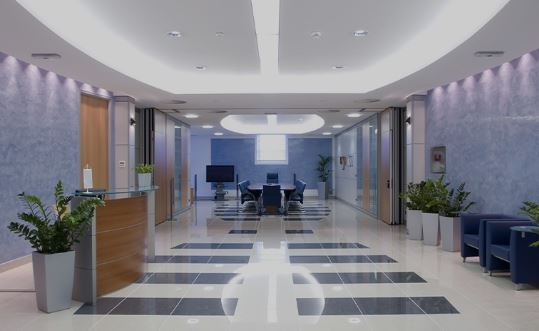Top Lighting Design Trends Shaping California’s MEP Landscape
The Evolution of Lighting in California
California, known for its culture, landscapes, and innovation, is at the forefront of cutting-edge lighting design. Today’s lighting trends go beyond aesthetics. They emphasize sustainability, efficiency, and functionality, transforming how we illuminate spaces.
The fusion of art and engineering has reshaped the MEP Design (Mechanical, Electrical, and Plumbing) landscape. Lighting now plays a crucial role in enhancing both architectural beauty and user experience. From sleek, modern minimalism to biophilic designs that bring nature indoors, California is setting new standards in lighting innovation.
In this blog, we’ll explore the top lighting design trends revolutionizing the built environment. Whether you’re an architect, designer, or lighting enthusiast, these ideas will inspire your next project.
Sustainable Lighting Solutions: The Green Future
California is a leader in sustainability, and lighting design is no exception. Energy efficiency is a top priority, with innovations focusing on reducing power consumption and environmental impact.
The Rise of LED Technology
- LED lighting has become the gold standard.
- It lasts up to 25 times longer than traditional bulbs while using significantly less energy.
- Businesses and homeowners adopting LEDs not only cut electricity costs but also contribute to a greener future.
- LEDs generate less heat, reducing the need for excessive cooling—especially important in California’s warm climate.
Eco-Friendly Materials in Lighting Design
- Many designers now use recycled metals, glass, and plastics to create fixtures.
- This trend reduces waste while celebrating California’s artistic heritage.
- Locally crafted lighting pieces enhance sustainability and add a unique touch to interiors.
Biophilic Design: Merging Nature and Light
Biophilic design is revolutionizing California’s lighting landscape. This approach integrates natural elements into lighting solutions, improving well-being and productivity.
Natural Light as a Design Element
- Strategically placed windows and skylights maximize sunlight exposure, reducing reliance on artificial lighting.
- Sunlight filtering through interiors creates a warm and inviting ambiance.
- Designers use fixtures that mimic organic shapes, textures, and colors—bringing nature indoors.
Health Benefits of Biophilic Lighting
- Exposure to natural light improves mood, boosts creativity, and enhances productivity.
- Dynamic lighting systems mimic sunlight patterns, adjusting brightness and color temperature throughout the day.
- This approach aligns with circadian rhythms, promoting better sleep and overall well-being.
Smart Lighting Technology: Enhancing Efficiency and Control
Smart lighting is changing how we interact with spaces. These systems improve efficiency, convenience, and customization while reducing energy consumption.
Automated Lighting for Smart Spaces
- Smart sensors and IoT technology allow lights to adjust automatically based on daylight, occupancy, and individual preferences.
- These systems optimize brightness, minimize wasted energy, and create personalized environments.
Real-Time Monitoring and Control
- Smart lighting allows homeowners and businesses to track energy use in real-time.
- Mobile apps and voice assistants enable users to adjust settings remotely, program schedules, and dim lights based on activity.
- These innovations reduce energy costs and improve user experience.
California’s Push for Smart Energy Solutions
- With state regulations emphasizing energy efficiency, smart lighting helps meet compliance requirements.
- Investing in these technologies enhances sustainability and future-proofs buildings against evolving standards.
Energy-Efficient Lighting: Beyond LED Innovations
LEDs are just the beginning of energy-efficient lighting trends. Emerging technologies are shaping the future of illumination.
OLEDs: The Next Big Thing
- Organic Light-Emitting Diodes (OLEDs) are gaining popularity.
- Unlike traditional LEDs, OLEDs emit soft, even light.
- They can be integrated into walls, ceilings, and even furniture, offering new design possibilities.
Advanced Lighting Control Systems
- New lighting systems incorporate machine learning and AI-driven analytics to optimize energy use.
- These solutions automatically adjust brightness and temperature based on real-time environmental conditions.
- As a result, they enhance both sustainability and user comfort.
Final Thoughts: The Future of Lighting Design in California
Lighting is no longer just about illumination—it’s about enhancing spaces, improving efficiency, and promoting well-being. As California continues to innovate, trends like sustainable solutions, biophilic design, and smart lighting will define the future of the MEP landscape.
Key Takeaways
✔️ Invest in energy-efficient lighting to reduce costs and environmental impact. ✔️ Incorporate smart lighting systems for automation and better control. ✔️ Embrace biophilic design to improve health and well-being. ✔️ Stay ahead of trends by exploring emerging technologies like OLEDs and AI-driven lighting systems.
With these advancements, California is not just illuminating spaces—it’s shaping a brighter, smarter, and more sustainable future.
learn more: https://cltc.ucdavis.edu/publications/best-practices
Visit: https://gdiengdesign.com/gdiengdesign-mep/

















































